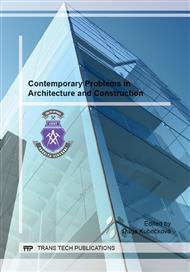p.447
p.451
p.457
p.463
p.472
p.478
p.484
p.491
p.495
Basics of Metals Theory of Extraction by Means of Chemical Water Solutions Filtration through Underground Ores
Abstract:
Abstract. Geo-technological extraction methods recently are widely used in the mining industry. Removing the metals from underground ore deposits is carried out by injecting chemicals (solvents, oxidants, reducing agents) into wells drilled in them, and the subsequent extraction of metals from saturated solutions. Particularly, this method utilized for the extraction of uranium from flooded sediments and copper from poor (substandard) ores, as well as some non-ferrous and rare metals from waste dumps and tailings of substandard ore mines and processing enterprises. The paper discusses methods developed for prediction of moisture content (water saturation) in rocks under filtration of liquid with incomplete saturation of pores while changing the concentration of the metal in the liquid phase (in an ore body), as well as problems of dissolution and desorption of metal salts on the surface cracks or pores on ore body based on molecular diffusion equation of metal salts. The present work conducted for developing the methods for calculating the liquid filtration through underground deposits of minerals and forecasting of dissolving and washing out metals. It is shown that the processes which take place with the use of chemical reagents are different comparing to the similar processes with water injection. These data allow to predict the changes in the concentration of salts and metals in the liquid and solid phases depending on time.
Info:
Periodical:
Pages:
472-477
Citation:
Online since:
October 2014
Authors:
Keywords:
Price:
Сopyright:
© 2014 Trans Tech Publications Ltd. All Rights Reserved
Share:
Citation:


